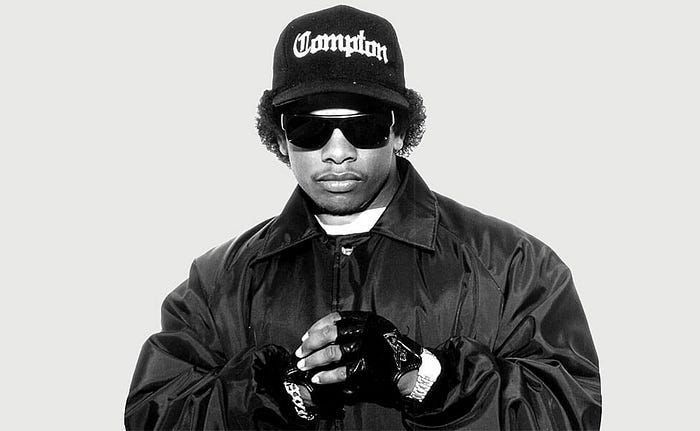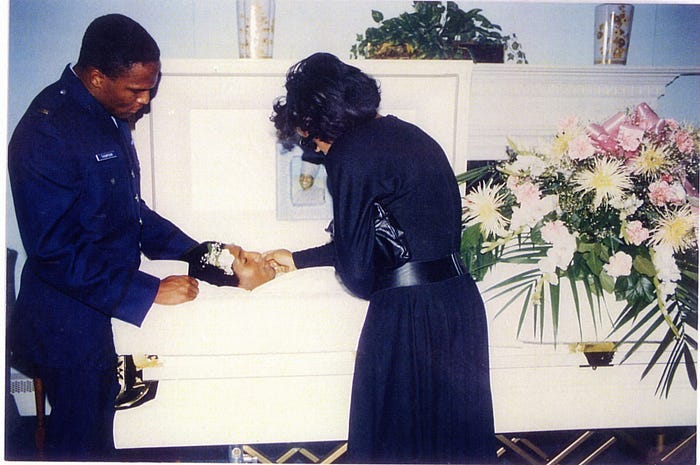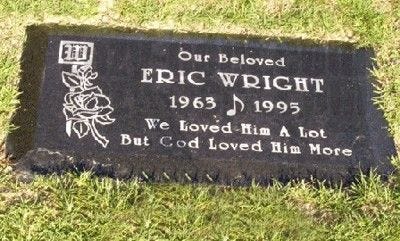Eazy-E: The Godfather of Gangsta Rap and His Lasting Legacy in Hip-Hop and Health Awareness
The 30th Anniversary of Eazy-E’s Death
Thirty years ago, on March 26, 1995, the hip-hop world lost a pioneer. Eazy-E, a legendary rapper and record executive, passed away untimely. His passing, just one month after his HIV/AIDS diagnosis, was a seismic event that reverberated through the community. Eazy-E was the first significant figure in rap to succumb to this devastating disease. He was instrumental in shaping West Coast rap and gangsta rap. As the leader of N.W.A, he was the driving force behind Ruthless Records. He rightfully earned the title ‘Godfather of Gangsta Rap.’ This was a testament to his profound impact on the genre.
On April 7, 1995, Eazy-E’s family and friends rested him at Rose Hills Memorial Park in Whittier, California. Over 3,000 people attended his funeral, including notable figures like Jerry Heller and DJ Yella. They placed him in a gold casket, and he wore a flannel shirt, jeans, and his signature Compton hat.
The Cultural Impact of Eazy-E’s Death
Eazy-E’s death marked a pivotal moment in the hip-hop community and the broader landscape of pop culture. He was one of the first prominent public figures to die from HIV/AIDS. His passing brought the conversation about the disease into the mainstream. It challenged stigmas and prompted discussions around health awareness, particularly within the African American community.
Eazy-E’s influence extended beyond music; his narrative shaped perceptions of West Coast rap and its cultural implications. As the ‘Godfather of Gangsta Rap,’ his work with N.W.A pushed boundaries, dealing with themes of police brutality and systemic injustice. His death prompted many artists and fans to think about mortality and legacy. These ideas resonated deeply in music and art.
His passing sparked a wave of nostalgia in the hip-hop community. Reverence led to tributes, documentaries, and discussions. These highlighted his contributions. Artists from various genres spoke about his influence, ensuring his legacy lived on. Eazy-E’s impact resonated across generations. New artists cited him as an inspiration. They blended his storytelling and style into their work.
Moreover, his death raised awareness of the HIV/AIDS epidemic, inspiring charity events and campaigns dedicated to prevention and education. His passing started a cultural dialogue. It helped pave the way for more discussions about health issues in the Black community and beyond.
In summary, Eazy-E’s death had a profound cultural impact. It led to increased awareness of HIV/AIDS. There was a greater appreciation for his contributions to music and culture. His lasting legacy continues to influence artists and audiences today. Eazy-E’s death on March 26, 1995, marked a pivotal moment in the hip-hop community. It significantly affected the broader landscape of pop culture. As one of the first significant public figures to die from HIV/AIDS, he moved the conversation about the disease into the mainstream. His passing led to this shift. This event challenged stigmas and prompted discussions around health awareness, particularly within the African American community.
The Legacy of Eazy-E
Many fans revere Eazy-E as the “Godfather of Gangsta Rap.” He left an indelible mark on music and culture, transcending his brief life. His influence is evident in the evolution of hip-hop, which also plays a significant role in societal conversations on health, race, and artistic expression.
Eazy-E’s role as the leader of N.W. A was instrumental in bringing West Coast rap to the forefront. His gritty storytelling and unapologetic lyrics revealed the harsh realities of life in South Central Los Angeles. They tackled topics like police brutality and systemic injustice. This fearless approach resonated with many, giving a voice to marginalized communities and inspiring a new generation of artists.
He passed away on March 26, 1995, from HIV/AIDS. His death came as a profound shock. He was one of the first prominent figures in hip-hop to die from the disease. This tragic event ignited a broader conversation about HIV/AIDS in communities that had long faced stigma. It prompted discussions that were vital for health awareness. These discussions were critical in the African American community. Misconceptions and lack of information about the virus were prevalent there.
In the wake of his death, Eazy-E’s legacy continued to thrive. Artists across genres paid tribute, highlighting his influence on their music and careers. Documentaries and retrospectives highlighted his contributions, ensuring that people would remember him. Eazy-E became an enduring symbol of resilience and the power of voice in hip-hop.
Eazy-E’s story inspired people to take action. Awareness campaigns emerged in response to the HIV/AIDS epidemic. Charity events were also organized. They were inspired by the conversation sparked by his life and death. His legacy is more than just music. It became a call for education and prevention. This helped dismantle the stigma linked to the disease.
Today, Eazy-E’s impact is still palpable in the music industry. New artists continue to draw inspiration from his work, intertwining his storytelling techniques and stylistic elements into their creations. His narrative is a powerful reminder of how art can challenge societal issues. It evokes change and ensures his legacy lives on.
In summary, Eazy-E’s legacy is multifaceted and extends far beyond his contributions to hip-hop. It is a testament to the intersections of culture, health awareness, and social justice. This legacy continues to inspire and provoke thought in artists and audiences alike.
Rest In Peace, Eazy-E!
By Shamarie Knight






